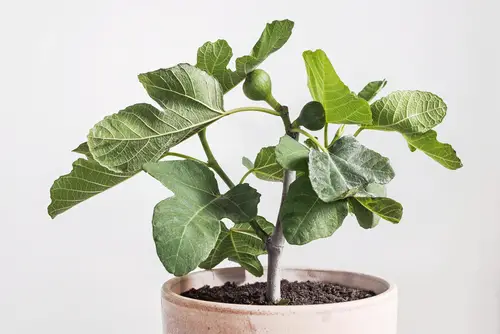Fig trees are a popular fruit tree in Louisiana due to their ability to produce juicy and sweet fruits with little care. However, planting and growing fig trees require some basic knowledge and preparation. Understanding when to plant fig trees in Louisiana is an essential aspect of growing them successfully.
The ideal time to plant fig trees in Louisiana is during the late winter to early spring when the trees are dormant. According to the LSU AgCenter, figs are one of the most widely planted fruit trees in home landscapes in Louisiana, and they will produce crops of juicy, sweet figs every July.
Choosing the right location, preparing the soil, selecting the right variety, and following the proper planting process are all critical factors in successfully growing fig trees in Louisiana.
Key Takeaways
- The ideal time to plant fig trees in Louisiana is during the late winter to early spring.
- Choosing the right location, preparing the soil, selecting the right variety, and following the proper planting process are all critical factors in successfully growing fig trees in Louisiana.
- Understanding the basics of caring for fig trees and dealing with common issues can help ensure a bountiful harvest.
Also don’t miss:
- When to Plant Cucumbers in North Florida?
- When to Plant Cucumbers in Central Florida?
- When to Plant Grass Seed in Idaho?
Understanding Fig Trees
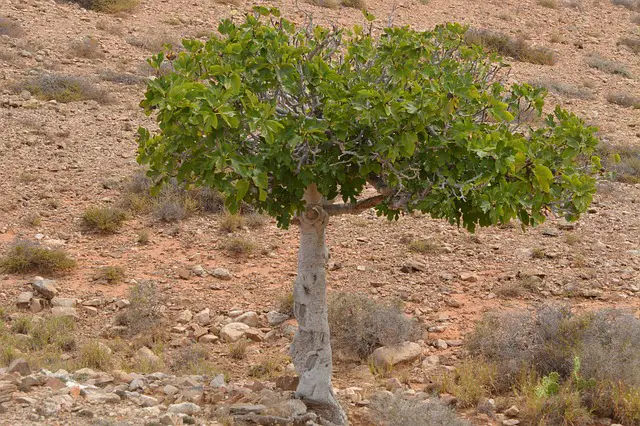
Fig trees, also known as Ficus carica, are deciduous trees that produce edible fruit. They are popular in Louisiana due to their ability to thrive in the state’s subtropical climate. Fig trees can grow up to 30 feet tall, but most cultivated varieties are smaller, usually reaching a height of 10-15 feet.
Figs come in a variety of sizes, shapes, and textures. The fruit is usually pear-shaped and can range in size from 1 to 5 inches long. The skin of the fig can be green, yellow, purple, or black, and the flesh can be pink, red, or white. The texture of the fruit can be smooth or grainy, and the flavor can range from sweet to tangy.
Fig trees produce flowers, but they are usually not visible as they are enclosed within the fruit. The fruit is pollinated by fig wasps, but some varieties of figs, such as Celeste, Kadota, Brown Turkey, Champagne, Alma, or LSU Purple, do not require pollination to produce fruit.
When it comes to planting fig trees in Louisiana, it is best to wait until the late winter or early spring when the trees are dormant. This is the ideal time to plant fig trees as it allows them to establish their root systems before the hot summer months.
It is also important to choose a location with full sunlight and well-draining soil to ensure the tree’s success.
When to Plant Fig Trees in Louisiana
Fig trees are a popular fruit tree in Louisiana, and they can be planted in both spring and winter. The ideal time to plant fig trees in Louisiana is during the late winter to early spring while the trees are dormant. This period is from late February to early March when the temperatures are mild, and the soil is moist.
It is important to note that planting fig trees during the hot summer months should be avoided. The high temperatures and dry soil can cause stress to the young tree, making it difficult for it to establish itself.
Additionally, planting fig trees in the fall can also be risky, as the tree may not have enough time to establish its root system before the winter season.
When planting fig trees in Louisiana, it is important to choose a location with full sunlight and well-draining soil. Fig trees can grow up to 15 feet or more in height and width, so make sure you have adequate space where you plant them.
There are several varieties of fig trees that are suitable for planting in Louisiana, including Celeste, Kadota, Brown Turkey, LSU Gold, Champagne, Alma, and LSU Purple. These varieties are closed-eyed, meaning they do not require pollination by fig wasps.
Choosing the Right Location
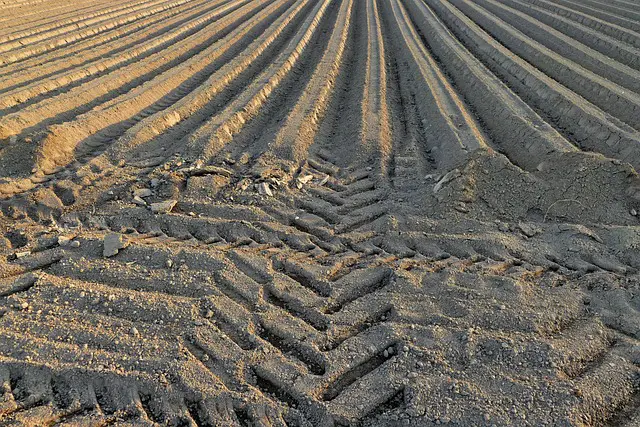
When planting fig trees in Louisiana, it is crucial to choose the right location. Fig trees require full sun to thrive, so it is essential to find a location that receives at least six hours of direct sunlight each day.
It is also important to choose a location with well-draining soil. Fig trees do not like to have “wet feet” and can suffer from root rot if planted in soil that does not drain well. If the soil in the chosen location is heavy clay, it may be necessary to amend it with sand or compost to improve drainage.
In addition to sunlight and soil, it is crucial to consider the size of the fig tree when choosing a location. Fig trees can grow up to 30 feet tall, with branches that spread wider than their height. It is important to choose a location where the tree will have enough space to grow without interfering with other plants or structures.
Finally, it is important to consider the microclimate of the chosen location. Fig trees are sensitive to cold temperatures, so it is best to avoid planting them in low-lying areas where cold air can settle.
It is also important to avoid planting fig trees in areas where they may be exposed to strong winds, which can damage the branches and fruit.
By considering these factors when choosing a location for a fig tree, gardeners in Louisiana can ensure that their trees have the best chance of thriving and producing a bountiful harvest.
Preparation for Planting
Before planting fig trees in Louisiana, it is important to prepare the soil to ensure optimal growth and fruit production. The following steps can help ensure a successful planting:
1. Soil Preparation
Fig trees grow best in well-drained soil with a pH between 6.0 and 6.5. It is important to test the soil pH and amend the soil as necessary to achieve the optimal pH range. Louisiana soils are typically acidic, so adding lime to the soil can help raise the pH.
2. Digging a Hole
When planting a fig tree, it is important to dig a hole that is twice as wide as the root ball. The hole should be deep enough to allow the top of the root ball to be level with the soil surface. The soil should be loosened and amended with compost or other organic matter to improve drainage and fertility.
3. Root Ball
Before planting, inspect the root ball to ensure that it is healthy and free of damage. If the roots are circling the root ball, gently loosen them to encourage outward growth. It is important to handle the root ball carefully to avoid damaging the fragile roots.
4. Planting
Once the hole has been prepared and the root ball inspected, carefully place the tree in the hole, making sure that the top of the root ball is level with the soil surface. Fill the hole with soil, pressing it down firmly to eliminate air pockets. Water the tree thoroughly to help settle the soil around the roots.
5. Mulching
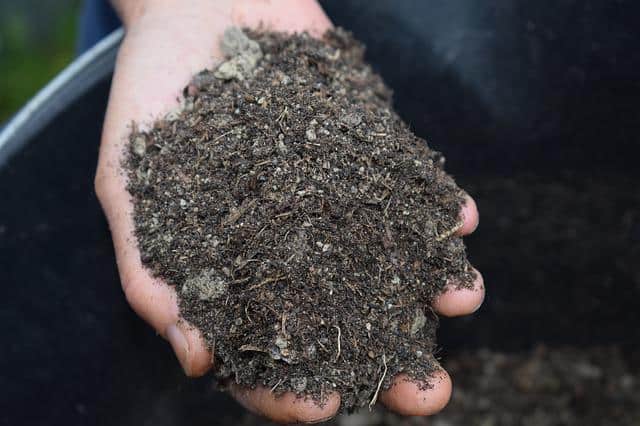
After planting, it is a good idea to mulch around the base of the tree. This will help retain moisture in the soil and prevent weeds from growing around the tree. Use a layer of organic mulch, such as wood chips or straw, and make sure to keep the mulch several inches away from the trunk of the tree to prevent rot.
By following these steps, gardeners can prepare the soil and plant fig trees in Louisiana for optimal growth and fruit production.
Selecting the Right Variety
When it comes to planting fig trees in Louisiana, it is important to select the right variety to ensure optimal growth and fruit production. Some varieties may not be suitable for the climate or may require pollination from fig wasps, which are not present in Louisiana.
According to the LSU AgCenter, some of the closed-eyed fig varieties that do not require fig wasps for pollination and are suitable for Louisiana’s climate include Celeste, Kadota, Brown Turkey, LSU Gold, Champagne, Alma, O’Rourke, Tiger, and Florentine.
These varieties are readily available and easy to grow, making them a popular choice for gardeners in Louisiana.
When selecting a fig variety, it is important to consider factors such as the tree’s size, growth rate, and fruit characteristics. For example, Celeste fig trees are known for their small size and sweet, flavorful fruit, while Brown Turkey fig trees are larger and produce larger fruit with a milder flavor.
It is also important to consider the fig tree’s cold hardiness, as some varieties may be more susceptible to cold injury than others. Selecting a variety that is well-suited to Louisiana’s climate and weather conditions can help ensure the tree’s survival and fruit production.
Planting Process
When planting fig trees in Louisiana, it is important to choose a suitable location with full sun exposure and well-draining soil.
The Louisiana Ag Center recommends selecting a recommended fig cultivar, such as Celeste, Kadota, Brown Turkey, LSU Gold, Champagne, Alma, or LSU Purple. These cultivars are closed-eyed and do not require fig wasps for pollination.
Before planting, it is essential to prepare the soil properly. The soil should be loosened to a depth of 12 to 18 inches and amended with organic matter such as compost or aged manure. The hole should be dug to a depth of 2 to 3 times the width of the root ball and wide enough to accommodate the root system.
After planting, the tree should be watered thoroughly and regularly. The soil should be kept moist, but not waterlogged. A layer of mulch around the base of the tree can help to retain moisture and regulate soil temperature.
If planting in a container, it is important to choose a container that is large enough to accommodate the root system and provide adequate drainage. The container should be filled with a well-draining potting mix, and the tree should be watered regularly.
To encourage healthy growth and fruit production, it is recommended to prune the tree in late winter or early spring, removing any dead or diseased wood and thinning out crowded branches.
Caring for Fig Trees

Figs are a hardy fruit tree that can thrive in Louisiana’s subtropical climate. Proper care and maintenance are essential to ensure the best growth and fruit production. Here are some tips for caring for fig trees in Louisiana.
1. Planting
Fig trees should be planted in late winter or early spring while they are dormant. Choose a location with full sunlight and well-draining soil. It is also important to protect the tree from strong winds, which can damage the foliage.
2. Watering
Figs require regular watering, especially during the summer months when new growth is developing. However, it is important not to overwater fig trees, as they are susceptible to root rot. A good rule of thumb is to water deeply once a week, and more frequently during periods of drought.
3. Pruning
Pruning is an important part of fig tree care. Prune the tree in late winter or early spring before new growth appears. Remove any dead or damaged wood, and thin out any crowded branches to promote better air circulation.
4. Fertilizing
Figs require regular fertilization to promote healthy growth and fruit production. Use a balanced fertilizer with equal parts nitrogen, phosphorus, and potassium. Fertilize the tree in the early spring before new growth appears, and again in the summer after the first crop of figs has been harvested.
Protecting from Freezing
In Louisiana, fig trees may be susceptible to freezing temperatures during the winter months. To protect the tree from freezing, cover it with a blanket or tarp when temperatures drop below freezing.
By following these tips for caring for fig trees, you can ensure that your tree will thrive and produce delicious fruit for years to come.
Harvesting and Usage
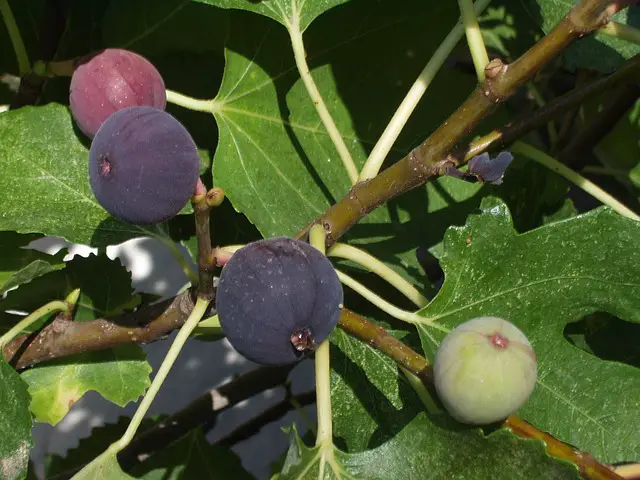
Once the figs have ripened, they should be harvested promptly. The color of the figs is an excellent indicator of ripeness. Ripe figs will be soft to the touch and will have a rich, deep color.
They should come off the tree easily when gently tugged. If the figs are still firm and have a greenish hue, they are not yet ripe and should be left on the tree to mature further.
When harvesting figs, it is best to wear gloves to prevent skin irritation from the sap. Green figs will not ripen once they are picked, so it is crucial to wait until they are fully mature before harvesting. Figs can be stored in the refrigerator for up to a week or frozen for later use.
Figs are a versatile fruit that can be used in a variety of ways. They can be eaten fresh, used in jams, baked goods, or preserves. Ripe figs are perfect for eating fresh, while slightly underripe figs are ideal for cooking.
When using figs in baked goods, they add a sweet, nutty flavor and moist texture. Figs can also be made into jams or preserves, which can be stored for later use or given as gifts.
Common Diseases and Pests
Fig trees in Louisiana are susceptible to several diseases and pests that can cause damage to the tree and reduce fruit yield. Here are some of the most common diseases and pests to watch out for:
Diseases
- Leaf Spot: This is a fungal disease that causes circular spots on the leaves. The spots are initially small and yellow, but they grow to become brown or black. Leaf spot can cause defoliation and weaken the tree.
- Fig Rust: Fig rust is a fungal disease that causes orange or yellow spots on the leaves. The spots can merge to form large patches, and the leaves may eventually drop off. Fig rust can also affect the fruit, causing it to become deformed and drop off prematurely.
- Fungus Diseases: Various fungal diseases can affect fig trees, including anthracnose, which causes brown or black spots on the leaves and fruit. Other fungal diseases include Botrytis blight, which causes gray mold on the fruit, and thread blight, which causes the leaves to turn brown and die.
Pests

- Mealybugs: These small, white insects feed on the sap of the fig tree and can cause the leaves to curl and turn yellow. Mealybugs also secrete a sticky substance called honeydew, which can attract other pests and cause sooty mold to grow on the leaves.
- Fall Armyworms: These caterpillars can cause significant damage to the leaves and fruit of fig trees. They feed on the leaves, leaving behind large holes, and can also bore into the fruit.
- Rust Mites: Rust mites are tiny pests that feed on the leaves of fig trees. They cause the leaves to become speckled and yellow, and they can also cause the fruit to become deformed.
To prevent diseases and pests, it is important to keep the tree healthy by providing adequate water, nutrients, and sunlight. Pruning the tree regularly can also help to improve air circulation and reduce the risk of fungal diseases.
If a disease or pest problem does occur, it is important to treat it promptly with an appropriate fungicide or insecticide.
Dealing with Common Issues
When growing fig trees in Louisiana, there are some common issues that can arise. Here are some tips to help you deal with them:
1. Sap
Fig trees can produce sap, which can be sticky and difficult to remove. It is best to avoid getting sap on your skin or clothing, as it can be hard to wash off. If you do get sap on your skin, try using soap and warm water to remove it. For clothing, try using rubbing alcohol or a commercial sap remover.
2. Leaves
Fig trees can drop leaves for a variety of reasons, including stress, disease, or pests. If you notice your fig tree losing leaves, it is important to identify the cause and take action to address it. Common pests that can affect fig trees include mites, scale insects, and mealybugs. To prevent these pests, try using insecticidal soap or neem oil.
3. Pollination
Some fig varieties require pollination by fig wasps to produce fruit. However, there are also closed-eyed fig varieties that do not require fig wasps for pollination and are suitable for Louisiana’s climate. These include Celeste, Kadota, Brown Turkey, LSU Gold, Champagne, Alma, and LSU Purple.
If you are unsure whether your fig tree requires pollination by fig wasps, consult a local horticulturist or nursery.
4. Main Crop
Fig trees typically produce a main crop in the summer, with a smaller crop in the fall. To ensure a good main crop, it is important to provide your fig tree with proper care and maintenance throughout the year. This includes regular pruning, fertilization, and watering.
5. Fig Wasps
Fig wasps are small insects that can pollinate certain fig varieties. While they are not harmful to humans or fig trees, some people may find them unsightly or unpleasant. To prevent fig wasps from entering your home, try using bird netting or other physical barriers around your fig tree.
6. Humid Weather
Humid weather can cause figs to crack or split, making them unsuitable for eating or preserving. To prevent this, try harvesting your figs as soon as they are ripe and storing them in a cool, dry place. You can also try growing fig varieties that are more resistant to cracking, such as Brown Turkey or LSU Purple.
Purchasing Fig Trees
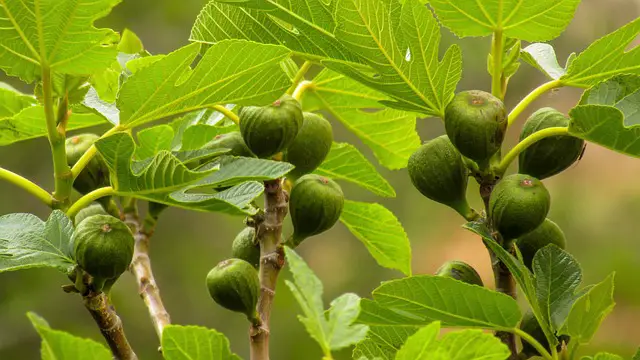
Fall through early spring is the best time to purchase fig trees from local nurseries or online retailers in Louisiana. Fig trees have been popular fruit trees in the state for many years, with some of the most popular varieties coming from a breeding program at the LSU AgCenter.
When purchasing a fig tree, make sure to choose a healthy tree with a strong root system. Look for a tree with a sturdy trunk and branches that are evenly spaced. Avoid trees with discolored or damaged leaves or signs of disease or insect infestation.
It’s important to choose the right variety of fig tree for your area. The LSU AgCenter recommends several varieties that are well-suited to Louisiana’s climate, including Celeste, LSU Purple, and Brown Turkey. These varieties are known for their sweet, juicy fruit and hardiness in Louisiana’s hot, humid summers.
When purchasing a fig tree, make sure to consider the size of your planting area. Although not huge as trees go, fig trees can grow 15 feet or more high and wide. Make sure you have adequate room where you plant a fig tree.
Frequently Asked Questions
When is the best time of year to plant fig trees in Louisiana?
The best time to plant fig trees in Louisiana is in late winter or early spring, when the soil is moist and workable. This allows the roots to establish before the hot summer months.
What are the ideal growing conditions for fig trees in Louisiana?
Fig trees thrive in well-draining soil with a pH between 6.0 and 6.5. They prefer full sun and protection from strong winds. In Louisiana, it is important to choose a location that is not prone to flooding.
How do you properly plant a fig tree in Louisiana?
To plant a fig tree in Louisiana, dig a hole that is twice as wide and deep as the root ball. Place the tree in the hole and fill in with soil, making sure to tamp it down firmly. Water the tree thoroughly and add a layer of mulch around the base to retain moisture.
What are the most popular LSU fig varieties for Louisiana?
The LSU AgCenter has developed several fig varieties that are well-suited to Louisiana’s climate. These include the LSU Purple, the LSU Gold, and the Tiger fig. All of these varieties are known for their sweet, juicy fruit and resistance to disease.
When can you expect fig trees to start producing fruit in Louisiana?
Fig trees typically start producing fruit within two to three years of planting. In Louisiana, figs are usually harvested in July.
What are some tips for caring for fig trees in Louisiana?
To care for fig trees in Louisiana, water them regularly during dry periods and fertilize them once a year in the spring. Prune the trees in late winter to remove any dead or damaged branches. Watch for signs of disease or pest infestation and take action promptly if necessary.

Hey, I’m Lisa and I’ve been an avid gardener for over 30 years. I love writing, talking and living in the garden! Feel free to connect with me on my socials below

